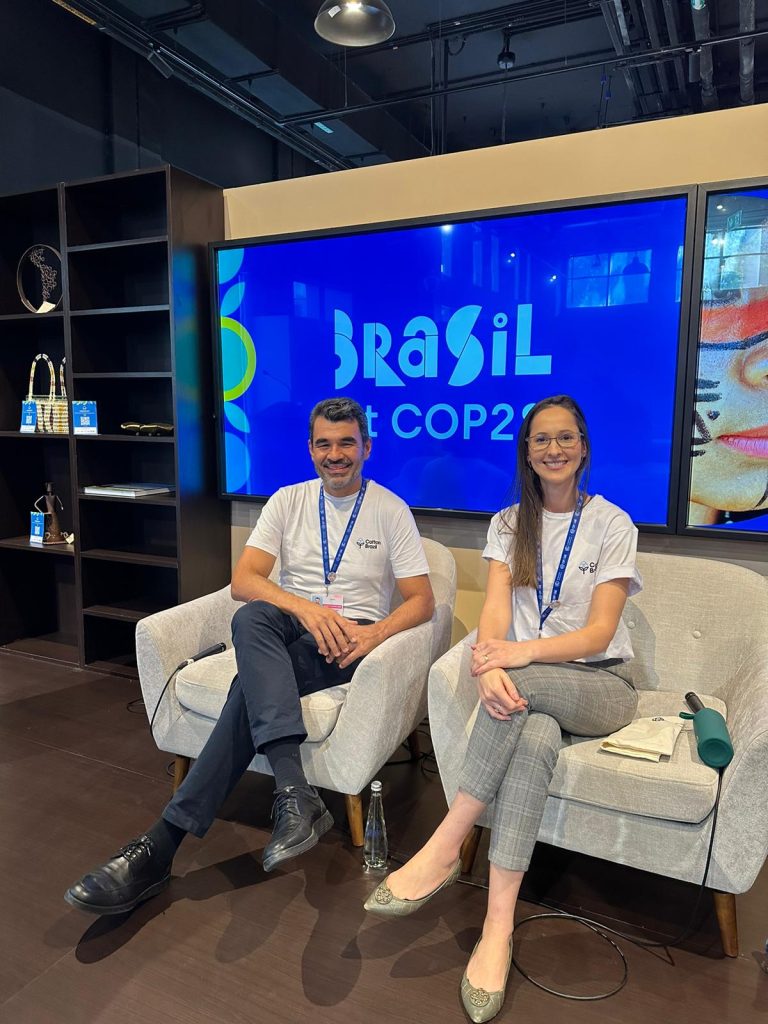COP28 – Cotton: aligned with the world’s needs
Brazilian cotton |
The 28th United Nations (UN) Climate Change Conference (COP) took place this month showing how important it is for us to gradually reduce our usage of fossil fuels over the next few years in the whole world. The target is to achieve net zero carbon emissions by 2050, in addition to reducing the global average temperature to safe levels below 2ºC, as established in the Paris Agreement.
Within the exclusive agenda of events focused on agriculture, the Brazilian Cotton Growers Association (Abrapa) had the opportunity to present some alarming facts and data on the large-scale adoption of synthetic fibers, to the detriment of natural fiber usage, on a global scale.

During the “Green Production Dialogues” discussion panel, presented by Abrapa’s director of International Relations, Marcelo Duarte Monteiro, we saw that global fashion is increasingly dependent on fibres that are derived from fossil fuels. The use of synthetic fibres has increased five times (5x) more than the use of cotton in the last 20 years.
Cotton, the main competitive natural fibre on the market, emits less CO² per kilo of fiber produced when compared with all other commercially important textile fibres. Despite having the lowest level of greenhouse gas emissions, when grown responsibly, cotton has been losing market share year after year. In the 1960s, cotton’s market share was 65% and nowadays it’s at teh 23% mark.
The reduction in cotton’s share of the fashion market has three main causes. One of these is the demand for so-called “fast fashion” – cheaper clothes that are generally made with synthetic fabrics of fossil origin. Another aspect is the stagnation of global cotton production due to low yields and adverse weather events. The third factor is misinformation about cotton farming, which is still viewed negatively by society.

Regarding the first factor, it is difficult for cotton to compete fairly with the synthetics industry, which has lower production costs and has had large investments injected into the sector in recent years. However, Brazilian cotton farming has been an example of how to reverse the last two trends, providing hope that in the next few years natural fibres will gain a new boost.
Below are some statistics that support Brazil’s position as one of the most efficient countries in the world in the fibre production process, which will continue to be the basis for sustainable growth:
- Brazil has emitted 32% less CO² than the global average;
- Brazil has used 60% less land than the rest of the world to produce 1 kg of fibre due to our high yields – currently at 1,954 kg of lint/hectare;
- Brazil has used 98% less water to produce 1 kg of cotton compared to the world average and;
- Cotton-growing regions in Brazil have an HDI at least 17% higher than the national average.
Within the context of socio-environmental responsibility, 82% of the 2022 domestic cotton crop was certified by the Responsible Brazilian Cotton program (ABR), whilst the global certification average rate was 27% in the same period. Our position as the largest global supplier of sustainably sourced fibre is a source of pride for all who work in the Brazilian cotton production chain and this shows that the path to achieving a high level of social and environmental responsibility involves efficient production methods and high yields. We aim to constantly improve and promote cotton throughout the world, the sustainable Brazilian production model has been taken by Abrapa to 23 countries spread across the Americas and Africa. This initiative takes place through partnerships with the Food and Agriculture Organization of the United Nations (FAO), the Brazilian Cooperation Agency (ABC) and the Brazilian Agricultural Research Corporation (Embrapa).
The climate agenda is of paramount importance in the agricultural sector. Our sector has the greatest interest in having a stable climate for us to achieve high levels of performance. Supporting initiatives that promote advances in this area is one of our main priorities as representatives of Brazilian cotton farming since the production of food and fibres is currently hindered by climate change, forcing those involved to create increasingly resilient systems to maintain good production levels.

In Brazil, we still have important improvements to implement. Among these are the reduction in the quantities of farming chemicals used, further minimizing our water footprint, better carbonization measurements on farms and the dissemination of regenerative agriculture practices widely applied within the Brazilian cotton farming model.
Undoubtedly, the future of the fashion industry will involve a reorganization of the basis of fibre origin, with greater emphasis placed on natural fibres that are 100% biodegradable, as is the case with cellulosic products, and which have a lower environmental impact. When we envision a more sustainable future, we need to see clothes and products made with cotton being more highly valued by the global community, in line with the concepts of a circular economy and bringing hope for an even more conscious world.
